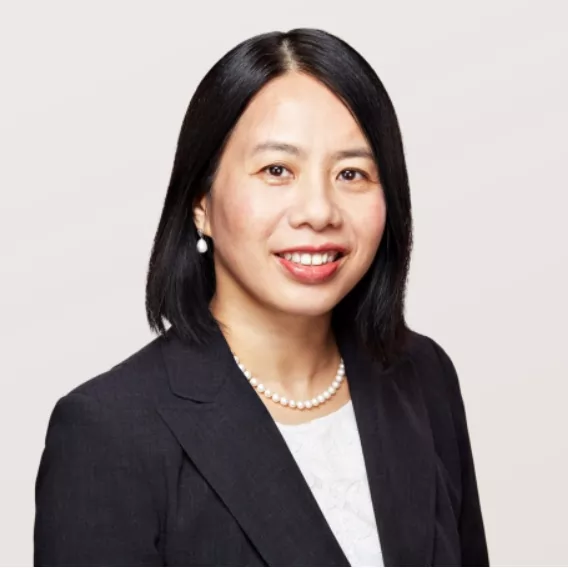Most patent applications are filed with a view to eventually obtaining protection in multiple jurisdictions. However, differences in patent systems mean that adopting a "one size fits all" approach to drafting and prosecution can result in patents that fail to fully meet the commercial needs of the rightsholders. In this article, we look at steps that can be taken during drafting and prosecution to ensure that the resulting patents are as enforceable and defensible as possible in multiple jurisdictions, but without incurring excessive costs.
Many patent applications are drafted under significant time pressures. It is consequently easy to lose sight of the commercial goals but, of course, the general aim with most patent applications is to end up with valid/patentable, enforceable, and infringed patents to assert against would-be infringers. It is therefore important to consider who this would-be infringer is when drafting to ensure that only the most valuable, enforceable and likely-infringed claims issue.
As an example, process claims can provide valuable protection for a commercial method. However, it is easy to draft a process claim with too many steps such that separate steps could be carried out by different parties and/or in different jurisdictions. Consequently, patentees can find themselves in a complex joint infringement scenario, which may make the claims difficult to enforce. Or the patentee may put unnecessary steps in issued claims. That raises the danger that an alleged infringer will use less than all the steps recited in issued claims and be able to avoid infringement.
Product-by-process claims are generally worthwhile including in a PCT application, but the scope of protection afforded by product-by-process claims differs around the world. For example, in the EPO and China, process limitations are construed only as means to specify the structure or characteristics/property of the product. However, in the U.S., the process limitations are only considered when determining patent infringement, not for patentability. In Korea, process limitations do not ordinarily limit the scope of the claims, but when the construed scope is considered to be too broad based on the specification, the scope can be limited to the specified processes.1
While enforcement of medical use and method of treatment claims is usually straightforward, enforcement of second non-medical use claims for, e.g., fuel additives, can be difficult. Is there a better way to try and claim the commercially valuable subject-matter? Indeed, is a patent application the best route for protection or do trade secrets provide a viable alternative?
Consideration of the infringer and therefore the claim categories that are of most value needs to occur at the drafting stage as the freedom to significantly amend originally presented claims during prosecution is generally limited.
Both the EPO and USPTO will allow additional claims to be added during examination assuming there is adequate support in the specification. In China, additional claims can be added, but should be added during the period for voluntary amendments, i.e., the early stage of the examination. In Korea, additional new claims may be allowed during examination, but often not in response to final rejections.2 Therefore, applications either need to be initially drafted with the fall back positions in mind, or at least amended to add the desired fall backs prior to the start of examination.
It is worth noting, however, that excess claims fees can significantly increase costs and therefore including a very large number of dependent claims could be prohibitively expensive. In Europe, the U.S. and China, applicants are entitled to a certain number of "free" claims (15, 20, and 10 respectively). However, in Korea there are no fee-free claims available and instead the request for examination and grant fee are both proportional to the number of claims. The same applies to the annuity or maintenance fees as the Korean annuities depend on the total number of claims while the European, U.S. and Chinese annuities are independent of the claim number.
While the freedom to amend during prosecution is generally considered to be limited at the EPO because of the very strict approach to added subject-matter, the EPO is surprisingly flexible when looking at the range of allowable post-grant amendments. Indeed, the EPO will allow any amendments that are made in response to a ground of opposition, provided that the requirements of Articles 123(2) and 123(3) EPC3 are met.
In China, claim amendments are allowed during the prosecution of the application on the condition that the specification provides literal support for such amendments. During invalidation proceedings, claim amendments are generally not allowed, except (1) deletion of a claim, (2) combining claims, and (3) correction of obvious typographic errors. In recent years, we have seen addition of specific claim element from a dependent claim to an independent claim to narrow the scope of the independent claim may also be allowed during the invalidation proceedings in China.
In Korea, Patentees may request the correction of errors in a granted patent, provided that invalidation proceedings are not ongoing. Claims may also be amended during the patentee's response period in invalidation proceedings. In both cases, claim amendments are limited to (i) narrowing the scope of claims; (ii) correcting clearly erroneous terms; or (iii) clarifying an ambiguous description.4
In the U.S., to correct mistakes of a clerical or typographical nature, the patentees or assignees may request the USPTO to issue a Certificate of Correction.5 To correct a wide variety of errors that are beyond a clerical or typographical nature, patentees can use reissue applications. MPEP § 1401. Some of the bases of reissue applications include: when the claims are too narrow or broad; when the disclosure contains inaccuracies; when applicant failed to or incorrectly claimed foreign priority; and/or when applicant failed to make reference to or incorrectly made reference to prior copending applications. MPEP §1402. Notably, in a reissue, U.S. patentees can only broaden the scope of the claims within two years of the issue date. MPEP §1412. In addition to Certificates of Correction and reissue, other possible routes for correction in the U.S. are correction of named inventorship by adding or deleting the names of individuals as inventors (35 U.S.C. § 256); disclaimers of a claim in a patent or the entire term or any terminal part of the term of the patent (35 U.S.C. § 253); and reexamination proceedings to determine the patentability of the claims in an issued patent over prior art patents or printed publications (35 U.S.C. § 302).
Summary
There is no "one size fits all" approach to balancing cost and enforceability, but in our opinion, these are some of key factors to keep in mind:
- Consider the infringer upfront and focus on the claim categories your specific commercial product requires.
- Where do you need the protection, and will it be possible to enforce your claims in the relevant territories?
- How many claims does your invention require? Balance cost flexibility to amend both pre- and post- grant.
- Is a single patent application really appropriate? Think about unity and local requirements such as Rule 43(2) EPC and U.S. restriction practice.
Footnotes
1. See 2013 HU 1726, Korean Supreme Court (Feb. 12, 2015)
2. Section 47 of Korean Patent Law
3. Article 123(2) EPC prohibits amendments that broaden the scope of the application as originally filed. Article 123(3) EPC prohibits broadening of the scope of the claims as granted.
4. Section 136 of Korean Patent Law
5. Manual of Patent Examining Procedure (MPEP) § 1481
The content of this article is intended to provide a general guide to the subject matter. Specialist advice should be sought about your specific circumstances.






